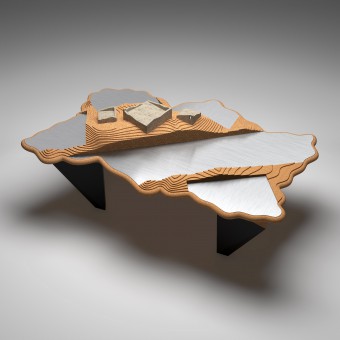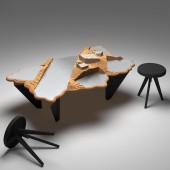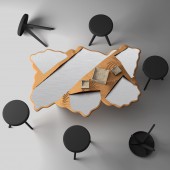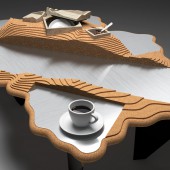
| THE AWARD |
| CATEGORIES |
| REGISTRATION |
| SUBMIT YOUR WORK |
| ENTRY INSTRUCTIONS |
| TERMS & CONDITIONS |
| PUBLICATIONS |
| DATES & FEES |
| METHODOLOGY |
| CONTACT |
| WINNERS |
| PRESS ROOM |
| GET INVOLVED |
| DESIGN PRIZE |
| DESIGN STORE |
| THE AWARD | JURY | CATEGORIES | REGISTRATION | PRESS | WINNERS | PUBLICATIONS | ENTRY INSTRUCTIONS |
Baan Tea and Coffee Table by Changheon Lee |
Home > Winners > Design #53946 >Interview |
 |
|
FS: What is the main principle, idea and inspiration behind your design?
CL: I see beauty in the imitation of geography by way of contour models. I applied contouring to the tabletop to create something novel and very contrary to existing tables and The main principle of this design was the contrast effect.
FS: What has been your main focus in designing this work? Especially what did you want to achieve?
CL: What I wanted to accomplish was to break existing stereotypes, I wanted to create a new concept table.
FS: What are your future plans for this award winning design?
CL: I'd like to make this a reality.
FS: How long did it take you to design this particular concept?
CL: 15 months.
FS: Why did you design this particular concept? Was this design commissioned or did you decide to pursuit an inspiration?
CL: I wanted to rebel against the existing table design.
FS: Is your design being produced or used by another company, or do you plan to sell or lease the production rights or do you intent to produce your work yourself?
CL: I want to collaborate with the company or cooperate with others to make it real.
FS: Who is the target customer for his design?
CL: Me and everyone.
FS: How did you come up with the name for this design? What does it mean?
CL: The name of the table Baan, is appropriated from the Korean word ‘bandae’, which means to ‘oppose’, ‘counteract’.
FS: Which design tools did you use when you were working on this project?
CL: AutoCAD, Rhinoceros, Adobe Photoshop, Pen and paper
FS: What is the most unique aspect of your design?
CL: I think the concept of rebelling against existing designs is extraordinary. And I think the shape is also special.
FS: Is your design influenced by data or analytical research in any way? What kind of research did you conduct for making this design?
CL: With the predicament of minimizing useable space to amplify room for the non-functional, there had to first be an understanding of defining ‘essential useable space’. In order to do this, trays used in cafes were studied. Such trays are generally manufactured to allow one person to amply support their dessert plate and cup. The dimensions of a range of trays were measured, and the averages were used to size the space per person for this table.
FS: What are some of the challenges you faced during the design/realization of your concept?
CL: It was difficult to express my ideas clearly with design.
FS: How did you decide to submit your design to an international design competition?
CL: I wanted to show this to many people. And I wondered what their reaction was.
FS: What did you learn or how did you improve yourself during the designing of this work?
CL: I learned the design process and I also learned how to express design clearly.
FS: Any other things you would like to cover that have not been covered in these questions?
CL: Thank you very much.
FS: Thank you for providing us with this opportunity to interview you.
A' Design Award and Competitions grants rights to press members and bloggers to use parts of this interview. This interview is provided as it is; DesignPRWire and A' Design Award and Competitions cannot be held responsible for the answers given by participating designers.
| SOCIAL |
| + Add to Likes / Favorites | Send to My Email | Comment | View Press-Release |





